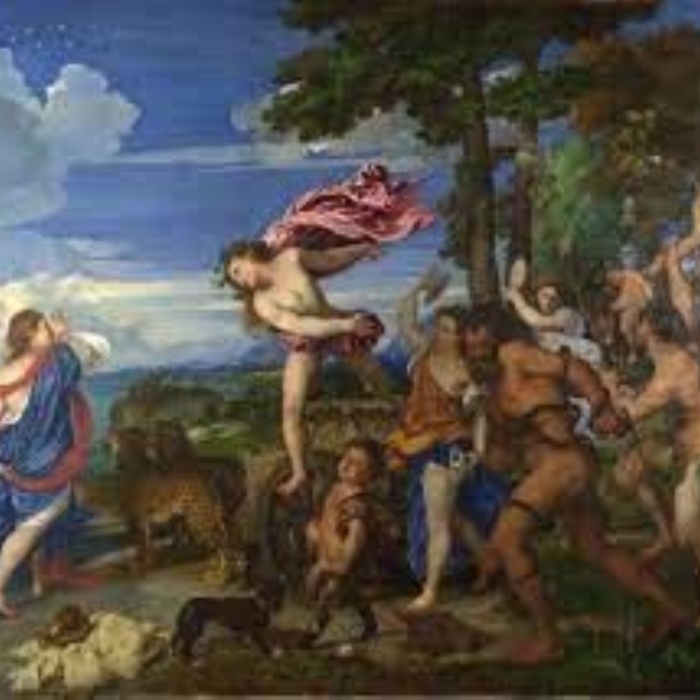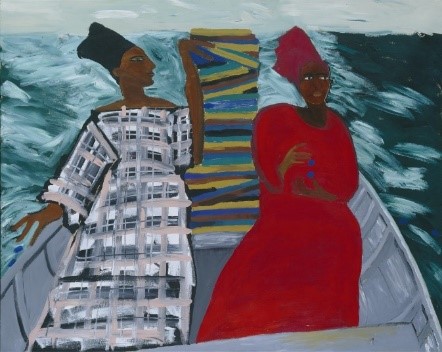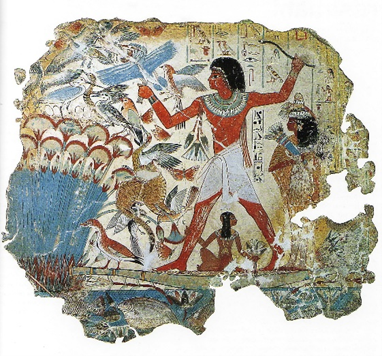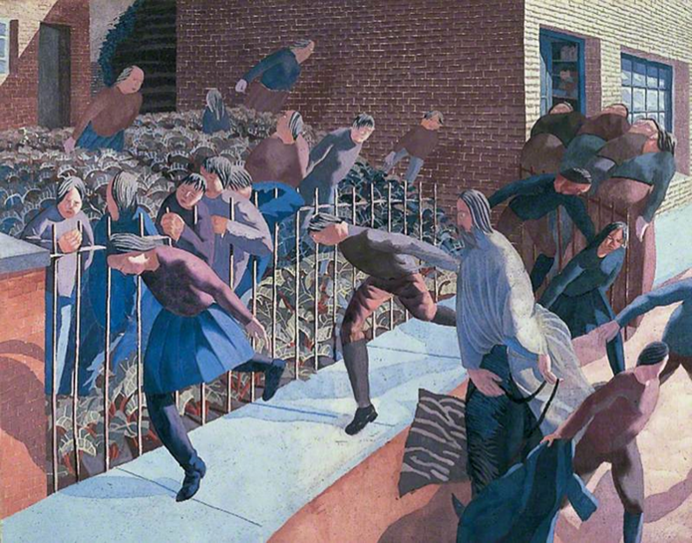
My name is Grainne Purkiss and I am Curriculum Lead at Oakley Vale Primary School. I have been working in education for over 25 years and prior to my “calling” I worked as a menswear fashion buyer for the long-dead Burton Group.
Once upon a time, and it really was a very long time ago, a very posh lady came to talk to my class about art. At the time I worked in one of the most deprived areas of Leicester (in fact one of the worst five in the country). The very posh lady proceeded to show, on an old slide projector, in the blacked-out music room the picture Titian’s “Bacchus and Ariadne” and I held my breath awaiting the oncoming car crash because the very posh lady asked my children what they could “see”.
“A monkey”. They replied. And “why are they dancing?” she said. “They’ve been drinking vodka”
The very posh lady brought the children up to the screen and asked them to show how they thought the artist painted the picture, providing them with an artist’s palette and paint brush (and beret!) and wham, those children were hooked. Hooked because none of their answers were deemed “wrong”, hooked because – posh lady reasons - and hooked because they were given a chance to enjoy stillness and quiet, calm reflection.
 The very posh lady was from an organisation called Magic Lantern Art and to be honest I had scoffed at the very thought of “these kids” getting anything from it. A shocking classist remark of which I am ashamed. However, the posh lady was so good that we invited her back and back again for several years. I then began my own journey of how to engage children through art which was enhanced in a way by my training with SAPERE in Philosophy for Children. One of the first things in P4C is to provide a stimulus so from the on in I would use works of art or artefacts to stimulate, enhance and embellish most areas of the curriculum. To this end, each termly topic at Oakley Vale has a frontispiece – a work of art, an artefact, a photograph to anchor the learning - to use as a stimulus, to be part of the cultural learning journey. Years later I worked for the organisation as a freelance presenter. The Magic Lantern team specialises in using art in a cross-curricular way; using great artworks to “help children observe and explore the world around them”. The experience allows for the great art and cultural capital of our country, continent and world to be discovered, explored and discussed. Talk? About art? Yes! Allow the luxury of stillness and time in your classroom without a written outcome breathing down your neck.
The very posh lady was from an organisation called Magic Lantern Art and to be honest I had scoffed at the very thought of “these kids” getting anything from it. A shocking classist remark of which I am ashamed. However, the posh lady was so good that we invited her back and back again for several years. I then began my own journey of how to engage children through art which was enhanced in a way by my training with SAPERE in Philosophy for Children. One of the first things in P4C is to provide a stimulus so from the on in I would use works of art or artefacts to stimulate, enhance and embellish most areas of the curriculum. To this end, each termly topic at Oakley Vale has a frontispiece – a work of art, an artefact, a photograph to anchor the learning - to use as a stimulus, to be part of the cultural learning journey. Years later I worked for the organisation as a freelance presenter. The Magic Lantern team specialises in using art in a cross-curricular way; using great artworks to “help children observe and explore the world around them”. The experience allows for the great art and cultural capital of our country, continent and world to be discovered, explored and discussed. Talk? About art? Yes! Allow the luxury of stillness and time in your classroom without a written outcome breathing down your neck.
At university I had always been drawn to the cultural history modules and now when planning for history, English, RE, PSHE I will always use artworks as part of the learning journey because art and culture are embedded deep within our cultural DNA. As humans we have always sought to show the world how it is – whether through language, music or art. It is who we are and why movements such as Punk, Baroque and Mithraism exist. To speak to us. Art is subjective, there ARE no wrong answers! It is the ideal medium to engage children who may struggle to communicate in general, to give children the stillness and time to stop and look and appreciate. Even as an adult, when I visit a museum, I find myself saying “slow down, take your time”. Allowing you and your children to look and then, look again is invaluable.
history, English, RE, PSHE I will always use artworks as part of the learning journey because art and culture are embedded deep within our cultural DNA. As humans we have always sought to show the world how it is – whether through language, music or art. It is who we are and why movements such as Punk, Baroque and Mithraism exist. To speak to us. Art is subjective, there ARE no wrong answers! It is the ideal medium to engage children who may struggle to communicate in general, to give children the stillness and time to stop and look and appreciate. Even as an adult, when I visit a museum, I find myself saying “slow down, take your time”. Allowing you and your children to look and then, look again is invaluable.
A headline to an article in The Guardian, this year stated that “Museum visits do not improve GCSE results, study reveals” (Michael Savage Policy Editor Sat 12 Mar 2022)
It went on to say that a report found no correlation between better exam grades and exposure to ‘middle-class’ outings. But as Savage said “why on earth should it? A museum isn’t a textbook and a theatre isn’t a revision guide. These places don’t exist to make us answer questions on, they exist to enrich our lives, to give us a sense of who we are and of who other people are”. Thus, I would argue that using art enriches all lives including the teachers’. Having a handle on the way people communicated their thoughts through visual media is a way of being in their heads, understanding more thoroughly how they lived (and laughed and loved). It might take a little of your own frazzled brain energy and time to really get to know a work of art but tell me that these pictures don’t bring history to life, or RE or geography, or PSHE for that matter. When you look at these images, what do you see?
Please visit these wonderful people – if you have a minute!
https://magiclanternart.org.uk/
|
Bacchus and Ariadne |
Titian |
1522 |
National Gallery |
|
Between the Two My Heart is Balanced |
Lubaina Himid |
1991 |
Tate Gallery |
|
Tomb of Nebamun |
Unknown |
@1350 BCE |
British Museum |
|
Christ’s entry into Jerusalem |
Stanley Spencer |
1920 |
Leeds Art Gall |
List of artworks used to illustrate.

